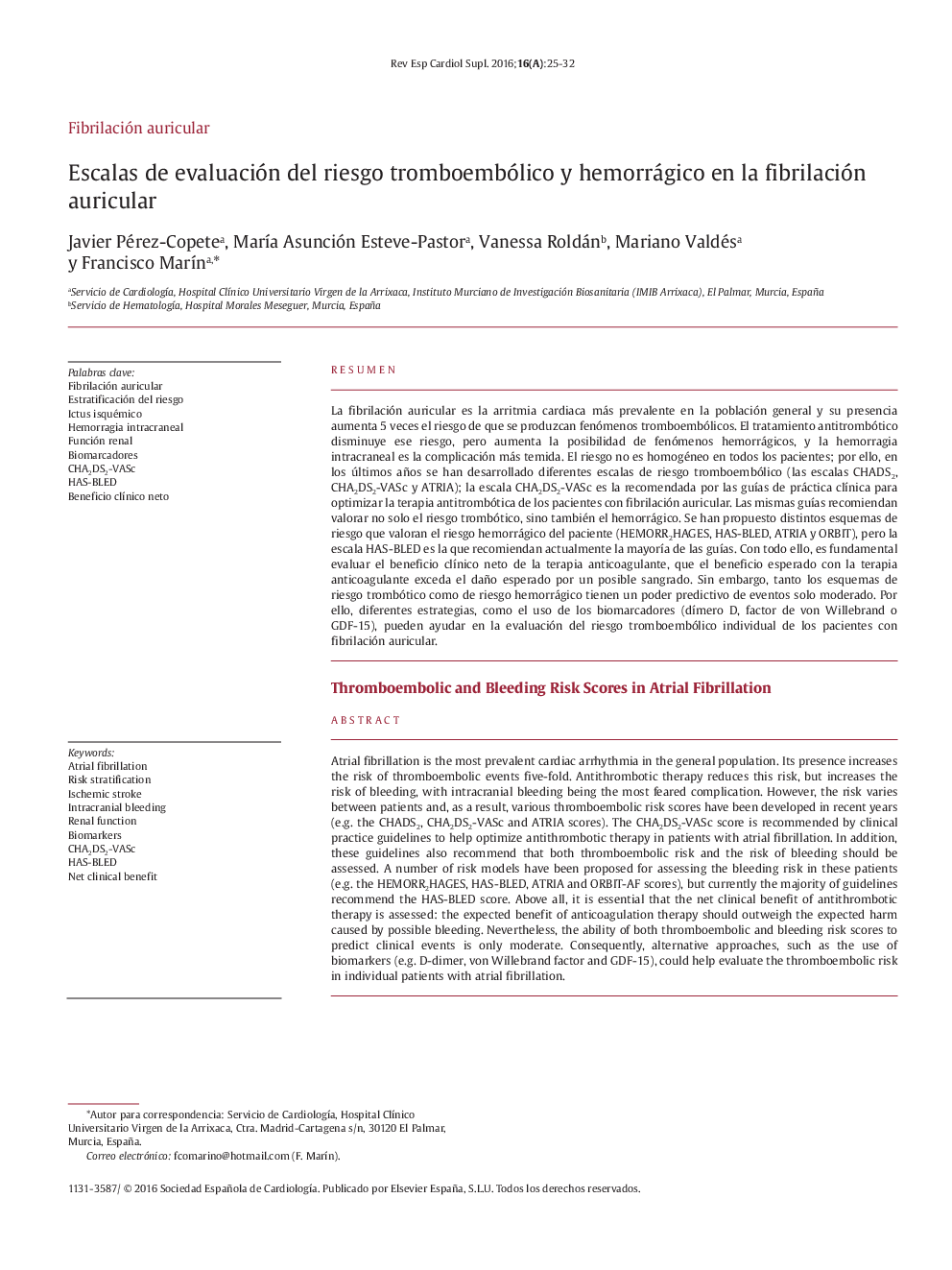| Article ID | Journal | Published Year | Pages | File Type |
|---|---|---|---|---|
| 5620976 | Revista Española de Cardiología Suplementos | 2016 | 8 Pages |
Abstract
Atrial fibrillation is the most prevalent cardiac arrhythmia in the general population. Its presence increases the risk of thromboembolic events five-fold. Antithrombotic therapy reduces this risk, but increases the risk of bleeding, with intracranial bleeding being the most feared complication. However, the risk varies between patients and, as a result, various thromboembolic risk scores have been developed in recent years (e.g. the CHADS2, CHA2DS2-VASc and ATRIA scores). The CHA2DS2-VASc score is recommended by clinical practice guidelines to help optimize antithrombotic therapy in patients with atrial fibrillation. In addition, these guidelines also recommend that both thromboembolic risk and the risk of bleeding should be assessed. A number of risk models have been proposed for assessing the bleeding risk in these patients (e.g. the HEMORR2HAGES, HAS-BLED, ATRIA and ORBIT-AF scores), but currently the majority of guidelines recommend the HAS-BLED score. Above all, it is essential that the net clinical benefit of antithrombotic therapy is assessed: the expected benefit of anticoagulation therapy should outweigh the expected harm caused by possible bleeding. Nevertheless, the ability of both thromboembolic and bleeding risk scores to predict clinical events is only moderate. Consequently, alternative approaches, such as the use of biomarkers (e.g. D-dimer, von Willebrand factor and GDF-15), could help evaluate the thromboembolic risk in individual patients with atrial fibrillation.
Keywords
Related Topics
Health Sciences
Medicine and Dentistry
Cardiology and Cardiovascular Medicine
Authors
Javier Pérez-Copete, MarÃa Asunción Esteve-Pastor, Vanessa Roldán, Mariano Valdés, Francisco MarÃn,
